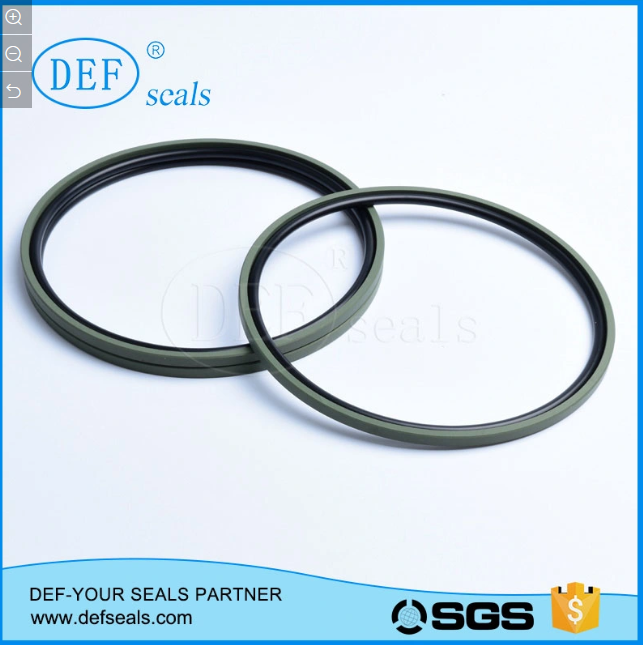Processing and Forming Characteristics of Fluoroplastics
2023-04-18
1. The carbon chain of polytetrafluoroethylene (PTFE, F4) macromolecule has fluorine atoms with strong electronegativity on both sides, which cannot be processed and molded by ordinary thermoplastic processing and injection molding methods, because it hardly flows when molten. Polytetrafluoroethylene is generally formed by compression or by plunger extrusion. The resin obtained by dispersion polymerization can be extruded and calendered using paste. The specific process conditions are: the pre forming pressure varies with the shape and size of the product, but it is usually 9.8-34.3MPa, and the resin with filler material is 29.4-93MPa. For large blanks with a thickness of about 600mm in the compression direction, a holding time of 20-30min is also required.
In PTFE molding, there is also a hot pressing method of placing sintered blanks into a mold preheated to sintering temperature, pressurizing while cooling; The automatic compression molding method of bidirectional extrusion and the equal pressure molding method using fluid pressure.
Extrusion molding is a method of using pre sintered PTFE material for bars, tubes, and profiles. Usually divided into two types: vertical or horizontal, but due to uneven filling of horizontal production pipe materials, vertical extrusion technology is often used. The process conditions are as follows:
① The diameter of the round rod is 13 to 40mm, the mold size is 15.1 to 46.0mm, the heating length is 500 to 1100mm, the heating temperature is 400 to 350 ℃, the cooling length is 150 to 200mm, and the extrusion speed is 4 to 1m/h.
② The diameter of the pipe is Φ 15~ Φ 40/ Φ 8~ Φ 25. The dimensions of the inner diameter of the material cylinder and the outer diameter of the core rod are Φ 16.5~44.5/ Φ 8.9~27.8, heating length 350~800, heating temperature 400~350 ℃, cooling length 150~250mm, extrusion speed 3.8~1.4m/h. The development direction of PTFE extrusion technology is to further improve extrusion speed and form multiple products in one go.
Dispersed PTFE is usually formed by paste extrusion method. Firstly, the dispersed PTFE resin and extrusion additives such as crude solvent, gasoline (b. p. 90-120 ℃), or white oil are mixed, placed in a glass or stainless steel bottle and rolled for 30 minutes to evenly disperse and absorb. After being placed for 8-12 hours, it is pressed into a blank and placed in the material chamber of the extruder, with a pressure of 0.69-3.43MPa and a holding time of 30-60 seconds. The extrudate made by the process needs to be removed from the extrusion additive through a continuous drying furnace (100-300 ℃). After entering the sintering furnace for sintering (360~380 ℃) and rapid cooling, good products can be obtained.
Paste extrusion stick( Φ 10~ Φ After 30), it can also be sent to the calender for calendering and film forming before sintering, which is the so-called Thread seal tape product. The specific molding conditions are 100 parts of resin, 27 parts of additives, a compression ratio (R, R) of 30, a machine head temperature of 50 ℃, and a shape of 50 extruded products × 14mm, rolling roller diameter 500mm, roller temperature 70 ℃, rolling speed 28m/min, one-time rolling to 500 × 0.1mm Thread seal tape.
2. Fluorinated resins other than polytetrafluoroethylene can be formed using thermoplastic resin molding methods such as molding, transfer molding, injection, extrusion, blow molding, etc.
① Molding method: This is an ancient plastic molding method. It is suitable for the production of products such as round rods, plates, and sleeves, as well as products with simple shapes and small batches.
② Transfer molding method: Transfer molding is the method of closing the mold and then using high pressure to squeeze the formed material grease from the material groove into the mold to form the product. Fluoroplastic transfer molding is suitable for producing small and large quantities of valves, pumps, and other products. Transfer molding can form high-precision products, but its disadvantage is that it consumes a lot of raw materials. The molding pressure used is usually below 9.8Mpa, and the processing temperature is similar to the injection molding temperature.
③ Injection molding; Injection molding is the same as regular plastic. It is suitable for processing various products such as load-bearing devices, instrument connectors, sockets, pipe fittings, winding shafts, irregular bearings, valves, pump shells, and impellers.
④ Extrusion molding: Extrusion molding is suitable for forming products such as films, pipes, rods, monofilament, wire sheaths, etc.
Fluorine containing copolymers release trace amounts of monomers and thermal decomposition products during the molding process, which requires corrosion resistance of equipment and molds. Generally, gold containing materials such as H alloy are used for manufacturing.
There are various methods for coating and forming of fluoroplastics, including dispersion coating, bulk coating, electrostatic coating, and flow impregnation. Regardless of the method, the substrate surface needs to be degreased, cleaned, and coarsened by sandblasting.
The thickness of the coating can be repeatedly sprayed until it reaches the required thickness (current level: 0.35mm/time, * final thickness 2mm). Fluoroplastic products can be processed twice, and the processing conditions are: cutting speed: below 200r/min when the diameter of the workpiece is between 200mm and 500mm, and 750-800r/min when the diameter is below 50mm. The rake angle of the turning tool should be greater than 20 °~45 °, with a feed rate of 0.5mm/r for rough machining and 0.01mm/r for precision machining.
News







